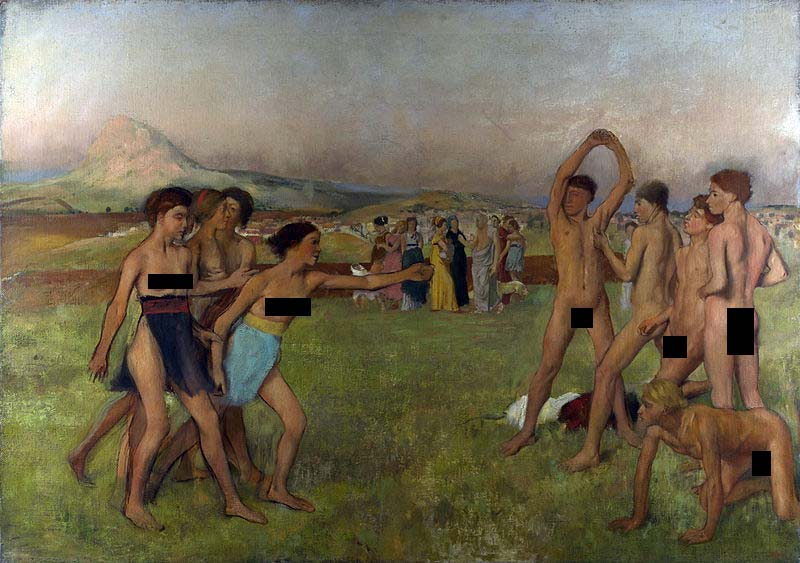| Young Spartans Exercising | |
|---|---|
 |
|
| Artist | Edgar Degas |
| Year | c. 1860 |
| Medium | Oil on canvas |
| Location | The National Gallery, London |
| Dimensions | 43.1 in × 61 in |
| 109.5 cm × 155 cm | |
| Famous Paintings by Edgar Degas | |
| A Cotton Office in New Orleans | |
| The Dance Class | |
| L’Absinthe | |
| Place de la Concorde | |
| Miss La La at the Cirque Fernando | |
| At the Races | |
| Interior | |
| The Bellelli Family | |
| Young Spartans Exercising | |
| More Famous Works |
Young Spartans Exercising is a painting by the French impressionist artist, Edgar Degas, dating from circa 1860. The painting is oils on canvas and its dimensions are 43 by 61 inches. It is currently part of the Degas collection held by the British National Gallery in London.
Composition
In the foreground, we can see two small groups of youths. There are five males on the right, all of whom are naked. Behind the men is a pile of discarded clothing. On the left, the artist has painted four partially clothed females. The females are apparently suggesting that the males should allow the females to join in their wrestling.
In the background, a small group of mainly females is depicted, and it is assumed these are the mothers of the youths. Also included is the figure of Lycurgus, a Spartan legislator who decreed that women should become involved in wrestling.
Behind the parental group we can see the city of Sparta. Overlooking the city is Mount Taygetus, which is to the left of the picture and behind the four female youths.
History of the painting
The painting is an early Degas work. He started it when he was just 26 years old. The artist continued to rework the painting throughout his lifetime. The painting was never offered for sale or placed in any exhibitions. Degas kept it in his studio until his death in 1917. The National Gallery acquired it in 1924.
A different version of the painting, also dating from around 1860, is held in the Art Institute of Chicago. This version is incomplete and shows the same groups of youths in the foreground but has a radically different background.
Oddity
Degas continually altered aspects of the painting, including the postures and position of the youngsters in the foreground, and even added and removed youths. As a result of the constant changing, the group of four girls actually has ten legs.